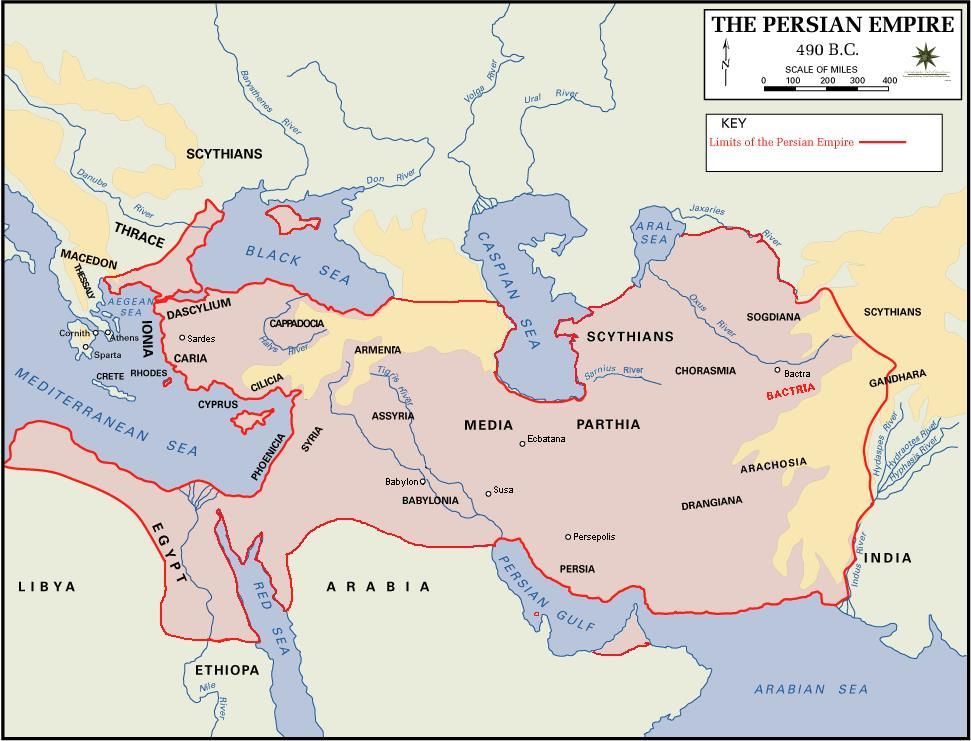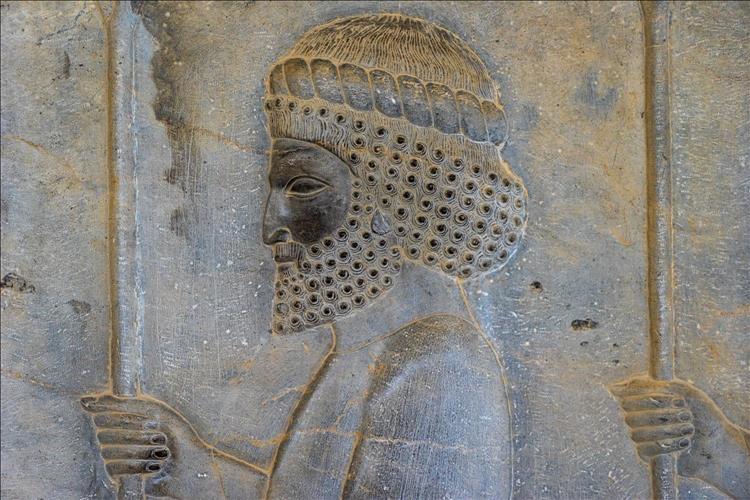(MENAFN - The Conversation) It's simply not possible to do justice to the value of Iran's cultural heritage – it's a rich and noble history that has had a fundamental impact on the world through art, architecture, poetry, in science and technology, medicine, philosophy and engineering.
The Iranian people are intensely aware – and rightly proud of – their Persian heritage. The archaeological legacy left by the civilisations of ancient and medieval Iran extend from the Mediterranean Sea to India and ranges across four millennia from the Bronze age (3rd millennium BC) to the glorious age of classical Islam and the magnificent medieval cities of Isfahan and Shiraz that thrived in the 9th-12th centuries AD, and beyond.

The Persian Empire in 490 BC. Department of History, United States Military Academy, West Point
The direct legacy of the ancient Iranians can be found across the Middle East, the Caucasus and Turkey, the Arabian Peninsula and Egypt and Turkmenistan, Uzbekistan, Afghanistan, India and Pakistan.
In the 6th century BC, Iran was home to the first world empire. The Achaemenids ruled a multicultural superpower that stretched to Egypt and Asia Minor in the west and India and Pakistan in the east. They were the power by which all other ancient empires measured themselves. Their cultural homeland was in the Fars province of modern Iran. The word Persian is the name for the Iranian people based on the home region of the Achaemenids – Pars.
Some of the richest and most beautiful of the archaeological and historical heritage in Iran remains there. This includes Parsgardae , the first Achaemenid dynastic capital where King Cyrus (c. 590-529BC) laid down the foundations of law and the first declaration of universal rights while ruling over a vast array of citizens and cultures.

Relief sculpture from Persepolis: one of the immortals perhaps? Angela Meier via Shutterstock
Nearby is the magnificent site of Persepolis , the great palace of the Achaemenid kings and hub of government and administration. Architecturally stunning, it is decorated with relief sculptures that still today leave a visitor in awe.
Seleucid and Parthian Iran
When the Achaemenids fell to the armies of Alexander the Great in the 4th century BC, what followed was great upheaval and also one of the most extraordinary moments in human history. The mixing of Persian and eastern Mediterranean cultures created the Hellenistic Age. The Macedonian King Seleucus (died 281BC) and his Persian wife Apame ruled a hybrid kingdom that mixed Greek, Persian, Jewish, Bactrian, Armenian, Sogdian and Aramaean cultures and religions.
With new cities, religions and cultures, this melting pot encouraged the rise of a thriving connectivity that linked urban centres in Iran, Iraq, Afghanistan, Turkmenistan and Syria (where many of the Hellenistic sites ( such as Apamea ) have been devastated in recent years by war and looting). The great city of Seleucia-on-Tigris/ Ctesiphon , just south of Baghdad on the Tigris river in modern Iraq, became the western capital and centre for learning, culture and power for a thousand years.
Hellenistic rulers gave way to Parthian kings in the 2nd century BC and the region was ruled by the Arsacid dynasty whose homeland, around Nisa, was the northern region of the Iranian world . The Parthian Empire witnessed growing connectivity between east and west and increasing traffic along the silk routes. Their control of this trade led to conflict with the Romans who reached east to grasp some of the resulting spoils.

Facade of Mosque of Sheikh Lotfollah in Isfahan city. Fotokon via Shutterstock
It was also a time of religious transition that not only witnessed the rise of Buddhism, but also a thriving Zoroastrian religion that intersected with Judaism and developing Christianity. In the biblical story of the birth of Christ, who were the three kings – the Magi with their gifts for Jesus – but Persian priests from Iran coming to the side of child messiah, astronomers following the comet.
The Sasanians
The last great ancient kingdom of the Iranians was the Sasanian empire based around a dynasty that rose out of the final years of the Arsacid rule in the 3rd century AD. The Sasanians ruled a massive geopolitical entity from 224-751AD. They were builders of cities and frontiers across the empire including the enormous Gorgan wall . This frontier wall stretched 195km from the Caspian Sea to the mountains in Turkmenistan and was built in the 5th century AD to protect the Iranian agricultural heartland from northern invaders like the Huns.

The line of the Gorgan Wall and fort viewed from aerial photograph Alchetron, Author provided
The wall is a fired-brick engineering marvel with a complex network of water canals running the whole length. It once stood across the plain with more than 30 forts manned by tens of thousands of soldiers.
The Sasanians were the final pre-Islamic dynasty of Iran. In the 7th century AD the armies of the Rashidun caliphs conquered the Sasanian empire, bringing with them Islam and absorbing much of the culture and ideas of the ancient Iranian world. This fusion led to a flowering of early medieval Islam and, of the 22 cultural heritage sites in Iran that are recognised by UNESCO, the 9th century Masjed-e Jāmé in Isfahan is one of the most stunningly beautiful and stylistically influential mosques ever built.
This was a thriving period of scientific, artistic and literary output. Rich with poetry that told of the ancient Iranian past in medieval courts where bards sang of great deeds. These are stories that we now believe reached the far west of Europe in the early medieval period possibly through the crusades and can only emphasise the long reach of the cultures of ancient and medieval Iran.
Iranian cultural heritage has no one geographic or cultural home, its roots belong to all of us and speak of the vast influence that the Iranians have had on the creation of the world we live in today. Iran's past could never be wiped off the cultural map of the world for it is embedded in our very humanity.
Tags


No comments:
Post a Comment